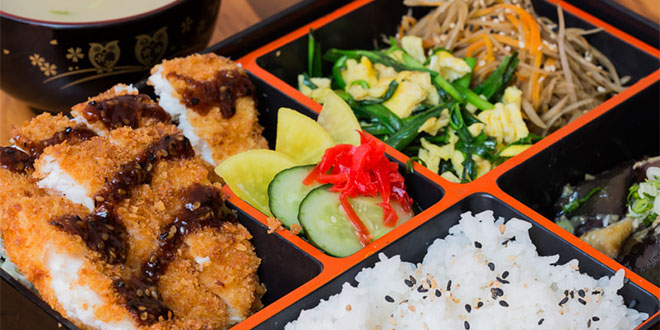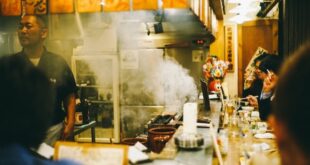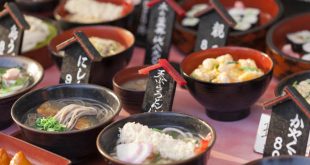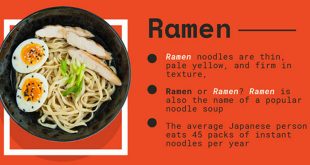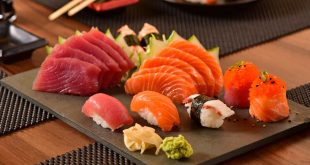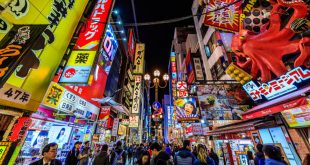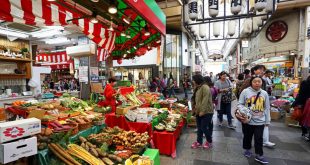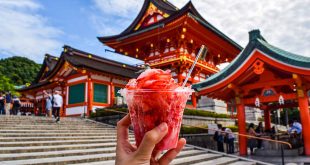Last Updated on March 29, 2023
The best part of Japanese food derives from the traditional word, washoku. Washoku comes from the Japanese characters wa, which means “Japanese” and/or “harmony”, and shoku, which means “food.” Although this word is many years old, families and restaurants today still create their meals based on washoku. Many of the aspects of washoku make the taste and appearance of Japanese food very appetizing.
The Healthy
While in Japan, I, fortunately, lost weight! Not only was I no longer eating the fast food quickly delivered to me in the US, but the portions served to me were perfect. I walked away from a restaurant feeling not full, but satisfied. Japan is not big on leftovers or doggy bags, so the portions given to customers are meant to be finished, which prevents overeating.
The Beauty
A variety of colors is incorporated into every dish, making the appearance beautiful and visually appealing. The main colors are as follows: meals will always have red (orange and pink included), green (blue included), black (purple included), white and yellow. So when a teishoku is placed in front of me, my eyes run eagerly across the rainbow on my tray, while thinking about what color to eat first.
Teishoku is a set meal. Along with colors, another lovely aspect of Japanese cuisine is the organizational layout of each dish.
TAKEAWAY: Within a traditional set meal, there will be rice in the lower left corner of the tray, the main entrée on the lower right, tea on the upper left, miso soup (or any soup) on the upper right, and then a smaller side dish situated in between the soup and the tea at the top of the tray.
If you want to pick up the rice bowl to shovel some into your mouth, be sure to place it back where you found it. My friend once moved her rice to the upper right corner and before the waitress left, she moved my friend’s bowl back without a word.
The (Not) Spicy
Unlike Mexican, Korean or Thai food, Japanese food will not burn your tongue. This tolerable characteristic means that anyone will be able to enjoy Japan’s delicious food. The food does incorporate other kinds of spices, but the ones that leave you blowing fire are not included. However, for those who enjoy the fiery spice (like me), a cup of chili oil or chili flakes sits upon ramen bars for any customer to pour into their dish.
“But what about wasabi?”- you say. This green, mashed radish is only enjoyed with Japan’s iconic dish, sushi. Wasabi is also optional when eating sushi, as it is often served on the side. This radish is used to open up your senses to create a gateway to the flavors of fish and other ingredients in the sushi—something to cleanse your palette. In my experience, wasabi will not make me call firefighters, but instead, briefly clears my sinuses and then disappears.
The Flavors
Just like colors, the way of washoku includes every kind of taste in each meal—bitter, salty, sweet, sour and umami (savory). When eating Japanese food, my tongue never gets tired of being entangled in a range of flavors.
The Cooking
If someone was to grow tired of one type of food, washoku cooks ingredients in a wide range of ways. One of my favorite foods is ramen and this is an example of simmered (boiled) cooking. Others include soba, udon, soup, and oden. There is also grilled food— one example is yakitori, meat or other vegetables that are skewered, then placed on a grill. Rice, served with almost every meal, is steamed, tempura is a kind of fried food and, last but not least, sushi represents food prepared raw. These styles of cooking also allow your tongue to play with the different textures they create.
The Entrees
Perhaps the most well-known dish in Japan is sushi. Even within this one type of food, there are several versions of it including sashimi, a classic roll and the modern “inside-out” roll, where rice encompasses the roll, rather than a layer of seaweed. If you eat sushi for one meal, you can easily jump to a different style for the next. The following list I created is not complete but, instead, is an insight about various foods. And everything tastes great!
Donburi: a bowl of rice topped with anything! Most commonly with some sort of meat and vegetables on top. This is a popular meal at most restaurants.
Okonomiyaki: a Japanese pancake! At many restaurants, you can make this yourself, too! Combining vegetables (sometimes mochi), fish, other meat and eggs in a bowl, then pouring it onto a large flat stove, creates a pancake-looking entrée that you can cut into with small self-size spatulas or pick up off the grill with your chopsticks.
Sukiyaki: a pot full of goodness! As a pot of broth boils, strips of meat, vegetables and sometimes noodles are placed inside of it to cook. To eat sukiyaki, use large cooking chopsticks to reach into the pot and scoop into your bowl.
Takoyaki: fried balls of octopus! These delicious little things can often be found in festivals as a simple and easy food to carry.
Soba: cold noodles! This is a traditional noodle often served cold on a tatami mat. With chopsticks, you lift up some soba, dip it in a cold, sweet and salty sauce, and then plop it into your mouth.
Udon: thick noodles! This is served hot with an almost clear, brown broth. Simple, but delicious!
Ramen: thin noodles! These noodles can be spicy and are often served with fish cakes, pork and/or other vegetables.
(The differences between the noodles are the broth and fixings they cook them with.)
Each Japanese meal is deliberately crafted, focusing closely on every color, flavor and technical aspect of the food, striving not to create a variety of dishes for customers, but to ensure they have a pleasant experience with every bite. And to learn more about washoku, please visit Washoku Cooking. Elizabeth Andoh, the author of this website, has a boisterous personality and a love for Japanese food. She studies washoku and enjoys traveling around the world, teaching others about it.
 Travel for Food Hub The Food Blog for Travel Lovers
Travel for Food Hub The Food Blog for Travel Lovers

